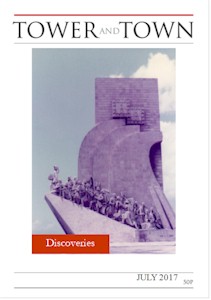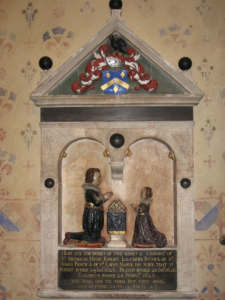

Tower and Town, July 2017 (view the full edition) (view the full edition)The Hyde Memorial, St Peter'sThere are many interesting wall memorials to be found in St Peter's Church, but the most famous one, and probably the one of greatest architectural interest, is on the chancel's north wall, and commemorates three of Sir Nicholas Hyde's children. Nicholas was born in the county, possibly at Tisbury, in about 1570 into a prominent local family with land in Berkshire and Hampshire as well as Wiltshire. By his marriage to the daughter of Sir Arthur Swayne he acquired the manor of Hinton Daubnay in Hampshire, in 1601 he was elected MP for Andover, and two years later for Christchurch. He gained a reputation as an opponent of the court of James I, but seems to have switched sides on the accession of Charles I for we find him defending the king's chief minister, the Duke of Buckingham, in 1626 against the charge of impeachment by the House of Commons. On the strength of this he was knighted and appointed Chief Justice of the King's Bench the following year, and was involved in a number of key political/constitutional cases as the king and Parliament clashed in the late 1620s. Despite his high office, he was described as of mean appearance and careless of his dress, riding on circuit in a whitish-blue cloak "more like a clothier or a woolman than a Lord Chief Justice" and lowering the dignity of his office. He died of gaol fever in 1631. 
The memorial records the deaths in 1626 of two of his sons, Robert and Francis, within four days of each other, and of one of his daughters, Elizabeth, a month later. We do not know the exact ages of the children when they died, but this is likely to have been a case of the plague attacking the youngest members of the family. It is a poignant reminder of the fragility of early seventeenth century life, even for those well born. A larger memorial of similar style commemorates Sir Nicholas and his wife Mary in the Church of All Saints in Catherington (Hampshire). On the base of that tomb are carved the kneeling figures of their six sons and four daughters. David Du Croz |